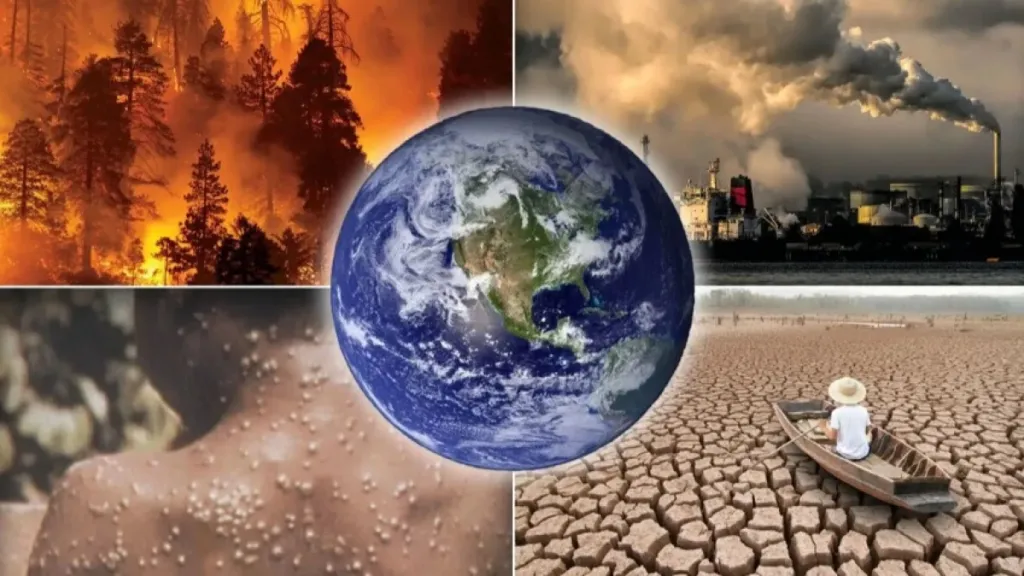Heat dominated climate headlines in 2024, the hottest year ever recorded in the history books. But less information remains about the uneven distribution of these dangerous, record-breaking temperatures. While some regions are facing unprecedented heat waves that are pushing the limits of human and environmental resilience, others remain relatively unscathed. A recent study highlights that some regions around the world are bearing the brunt of this escalating climate crisis and feeling the heat much more than others.
Hotspot mapping
The study, conducted by researchers from the International Institute for Applied Systems Analysis (IIASA) and Columbia University, provides a comprehensive look at where temperature increases are most common on Earth. The study provides the first global map of such high-risk areas, which some researchers call “climate danger zones.” The study’s lead author, Kai Kornhuber, is an assistant professor at the Columbia Climate School and head of IIASA’s Energy, Climate, and Environment topic.
“It refers to extreme tendencies that arise from physical interactions that we may not fully understand. These areas become temporary greenhouses,” Kornhuber said.
Climate data and extreme temperature
Researchers examined data from the last 65 years to identify these hotspots. By analyzing decades of temperature records, they found patterns that pointed to areas disproportionately affected by extreme heat. Experts focused on places where extreme heat events occur at an alarming rate, exceeding average temperatures for the warm season as a whole. These extreme heat events have become more frequent in the past five years, with occasional increases since the early 2000s.
Regions carrying the highest heat load
Regions severely affected by this warming include Central China, Japan, Korea, the Arabian Peninsula, Eastern Australia, parts of South America, and the Arctic. However, the most intense and persistent heat waves were recorded in northwestern Europe, causing approximately 60,000 deaths in 2022 and 47,000 in 2023. Maximum temperature records for these years were broken in Austria, France, Hungary, Slovenia, Norway and Sweden.
Additionally, parts of the southwestern United States and California experienced record temperatures even in October. Although temperatures in these places have increased at a rate that significantly exceeds the predictions of climate models, not all regions have experienced such unprecedented warming. In many regions, the temperature increase is actually lower than the model predicts. These include large areas of the north-central United States, south-central Canada, the interior of South America, northern Africa, northern Australia, and much of Siberia.
Also read – Blue aurora indicates unknown atmospheric processes
Consequences of extreme temperatures
Extreme heat can have serious consequences, affecting both people and the environment. For humans, extreme heat can lead to dangerous health problems such as heat exhaustion and heat stroke, especially for the elderly, young children, and those with pre-existing medical conditions. Dehydration is another big risk, and heat waves often lead to more hospital admissions and even deaths.
Cities suffer the most from the “urban heat island” effect, where buildings and pavements trap heat, making temperatures even higher. Heat waves also strain power grids as people turn on air conditioners, sometimes causing power outages when demand increases. The environment is also damaged. Prolonged heat can dry out soil, damage crops and reduce food production.
Wildfires become more frequent and intense during hot weather, destroying forests, wildlife habitats and even homes. Rivers and lakes can dry out, negatively affecting ecosystems and water resources for both humans and animals. Even aquatic life suffers as high temperatures reduce oxygen levels in water.
Extreme heat in hot climates
One of the study’s authors, Ph.D. “In most regions, the hottest days of the year are warming as quickly as normal summer days, the dominant signal of climate change, and in some regions even slower,” said Samuel Bartusek. from Columbia University.
“However, in the hotspots we identified, the hottest days warmed particularly quickly; this could be due to a variety of reasons.”
Some places may experience more heatwave-triggering weather conditions, or drying soil may exacerbate peak temperatures; Addressing these specific local factors will be important.
“Due to their unprecedented nature, these heat waves are often associated with serious health consequences and can be disastrous for agriculture, vegetation and infrastructure. We are not built for them and may not be able to adapt quickly enough,” Kornhuber concluded.
By identifying these heatwave hotspots, the study took an important step towards mapping new risks of extreme, unprecedented heat and measuring our ability to predict these danger signals. The findings open new avenues for climate change research and policy development and highlight the need for targeted interventions and resources in the areas that need them most. The full text of the research was published in the journal Proceedings of the National Academy of Sciences.













